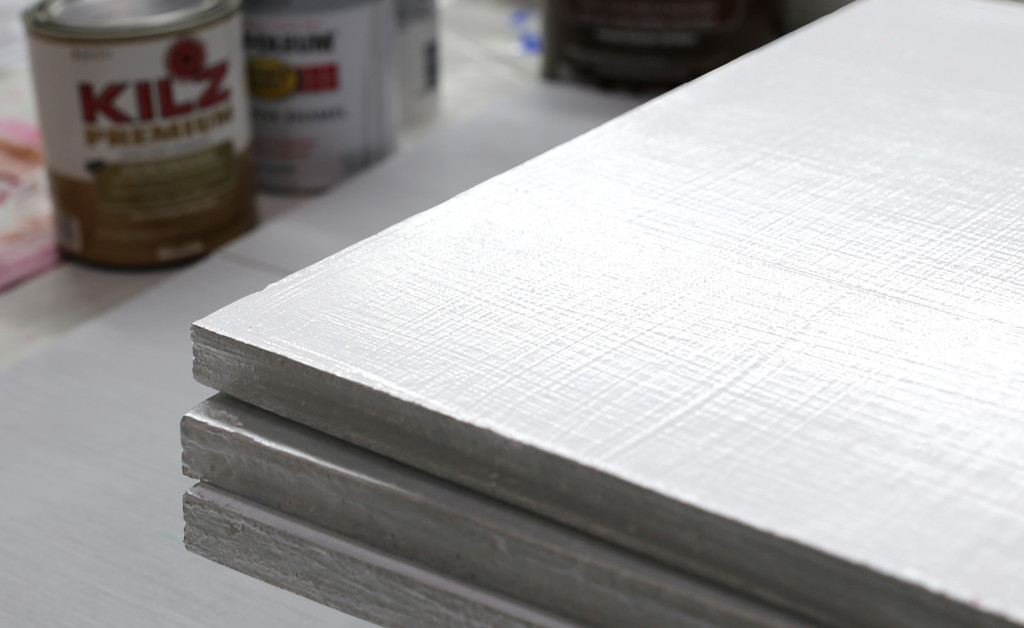Most painters have a sense of how to prepare panels for oil and acrylic paintings when they are meant to be shown indoors, and we even published a couple of Just Paint articles on the topic:
Understanding Wood Supports for Art – A Brief History
Plywood as a Substrate for Painting
However for both Muralists and Sign Painters questions can quickly arise when preparing panels for a life outside, where rain and humidity are a constant threat. What follows are our best recommendations drawn from industry research and our own field experience over the decades.
The first step, before anything else, is making sure you use an appropriate plywood as not all of them are made for extreme changes outdoors. We would strongly recommend working with either a marine grade plywood or a type of plywood called MDO (Medium Density Overlay), often referred to as sign painter’s board. Good lumber supply stores should be able to help you select one that is appropriate.
To prepare the panels for outdoors you will need to seal them as much as possible from moisture, especially along the sides, where water will easily penetrate. Below are the steps we recommend:
1) Make sure the surface is clean and free of any dirt, wax or oils.
2) Lightly sand all smooth surfaces to assure the primer has good adhesion.
3) Apply a minimum of two coats of a high quality alkyd-based exterior wood primer to all surfaces, including the edges and both the face and back. Exterior alkyd primers are available from most good commercial paint stores.
4) After the above has fully dried, seal the edges with an aluminum paint made from aluminum flake or leaf. This has consistently been shown to be the most effective moisture barrier when comparing various coatings.1 Most major manufacturers such as Sherwin-Williams®, Benjamin Moore®, PPG®, and Rust-oleum® produce these, where they are commonly used for marine, metal, or automotive applications.
5) Finish by applying a high quality exterior latex primer to the front and back of the panel. This will give additional durability and assure having a nice, bright white ground to paint on.
Once the panels are fully dry, follow the guidelines provided in our Exterior Mural Tech Sheet, paying particular attention to the recommended list of colors:
Once the mural is finished, you should apply an Isolation Coat and two or more coats of our MSA Varnish. For information on these, please see our MSA Varnish and Isolation Coat Tech Sheets, as well as our Mural Resource Guide:
As always, if you have further questions, please contact our Materials and Applications Specialists by email at [email protected], or call 800-959-6543 / 607-847-6154
1 See Williams, R. Sam. “Chapter 16: Finishing of Wood”, Wood Handbook, Madison, WI, Forrest Products Laboratory, pp. 13- 15. http://www.fpl.fs.fed.us/documnts/fplgtr/fplgtr190/chapter_16.pdf

